Take a wildflower hike at Ritchey Woods Nature Preserve to see what the “buzz” is all about. Pollinators abound in the prairie as the summer blooms take hold. I recommend the Orchard and Dragonfly Trails for the best views and pops of color.
Here are some of the beauties you should see along the way:
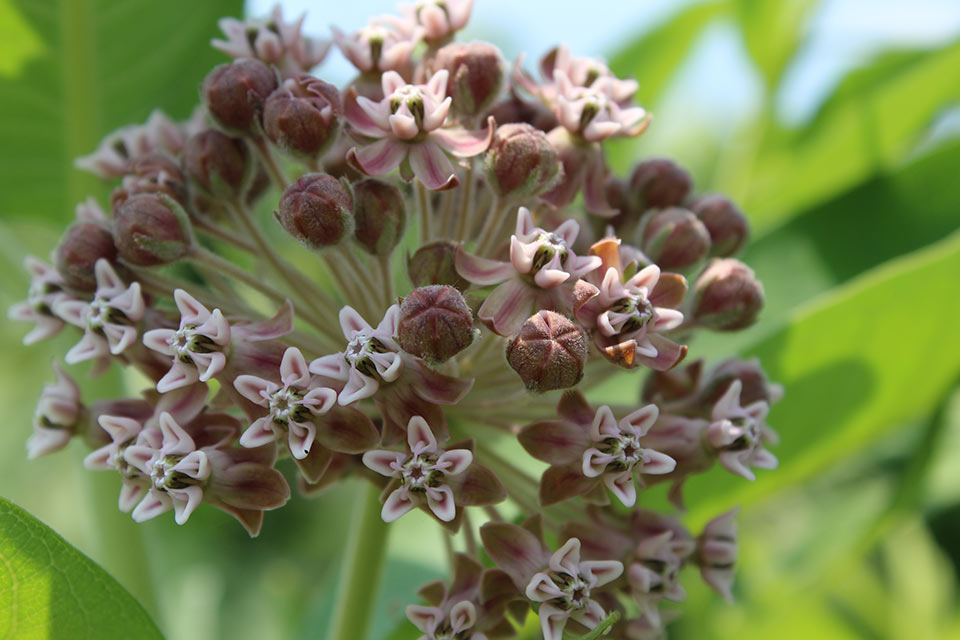
Common Milkweed (Asclepias syriaca)
Speaking of pollinators – let’s talk about my favorite pollinator, the monarch butterfly. Milkweed is the host plant for the caterpillars and vital to the monarch’s survival. The pink flowers are beautiful and they have a wonderful fragrance!
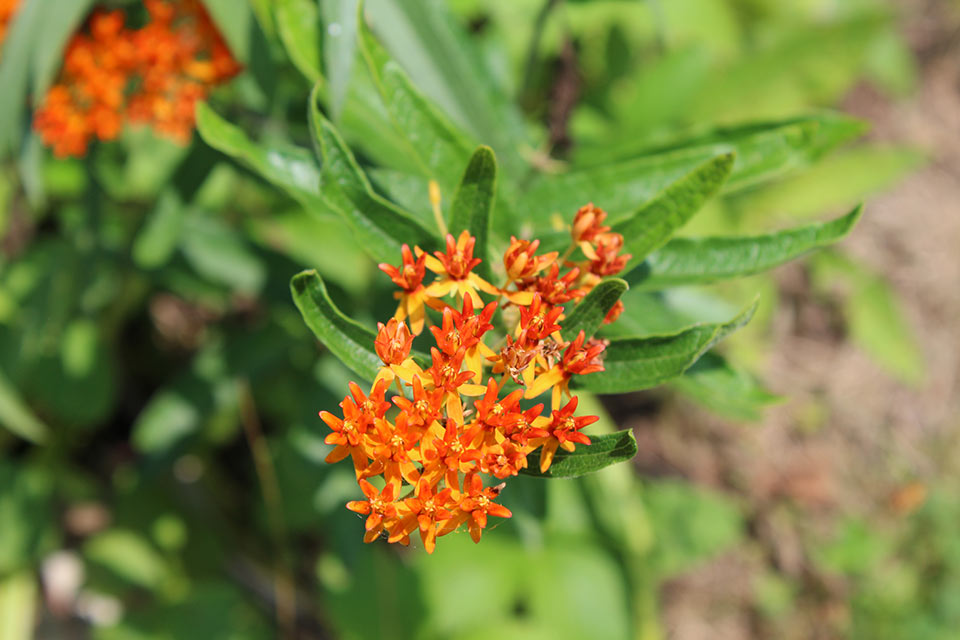
Butterfly Weed (Asclepias tuberosa)
This is another milkweed and it too will host monarch caterpillars. This plant is popular in the home landscape due to its shrubby form and bold, vibrant orange flowers.
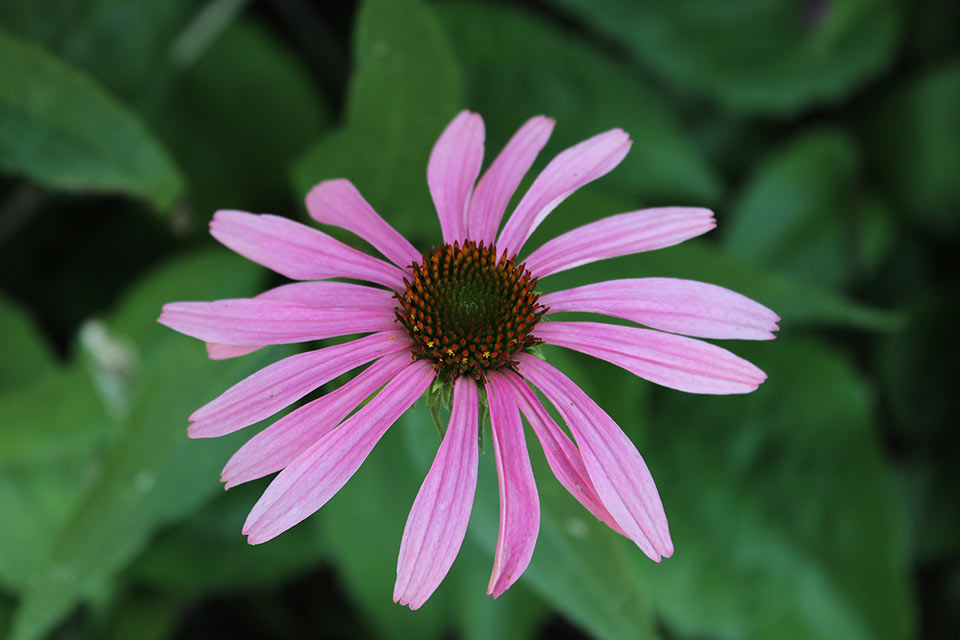
Purple Coneflower (Echinacea purpurea)
Perhaps one of the most recognized (and popular) of our native prairie flowers! The genus name for this plant (echinos) is Greek for hedgehog; give the central disk a gentle touch and you’ll know why it gets its name.
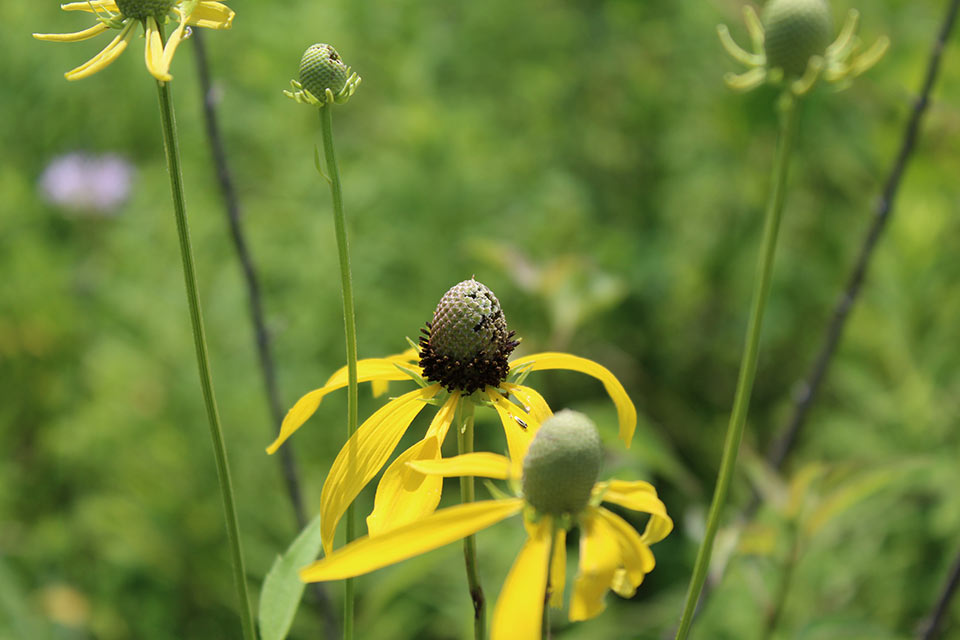
Gray-headed Coneflower (Ratibida pinnata)
The yellow petals droop far below the (often) gray central disk. I describe this flower as a “badminton birdie.”
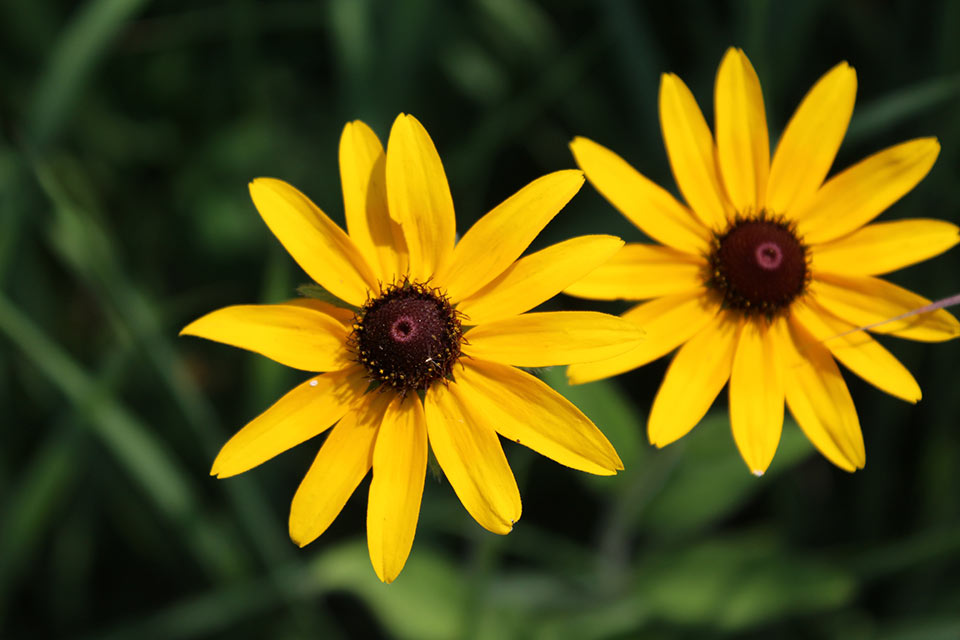
Black-Eyed Susan (Rudbeckia hirta)
The bright yellow petals are sure to catch your attention and the dark central disk has the look of a dark “eye”. If you’re considering this for your home landscape, I recommend Sweet Black-eyed Susan (Rudbeckia subtomentosa) instead. It is a perennial and has a more fragrant flower.
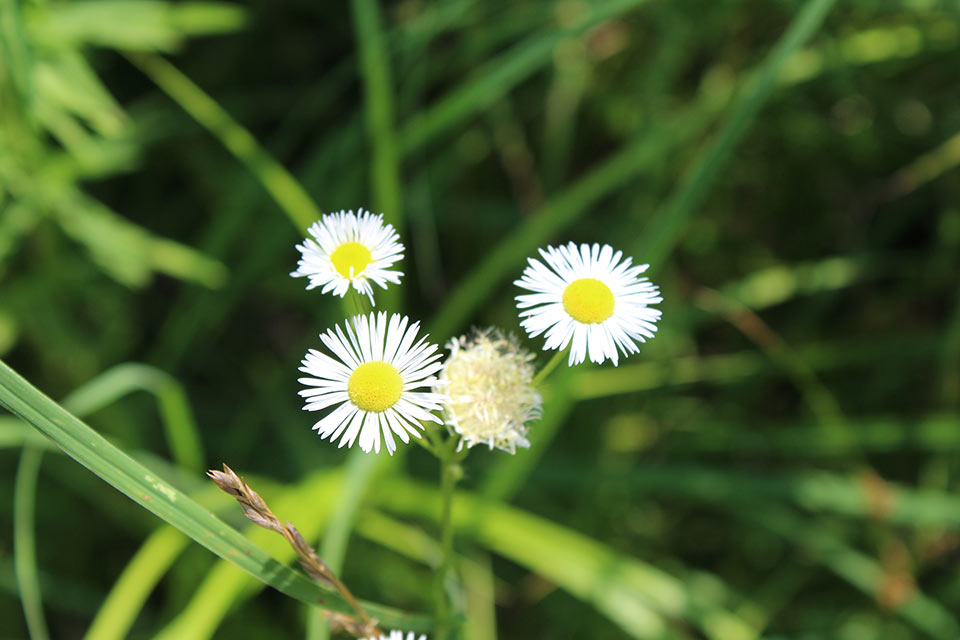
Daisy Fleabane (Erigeron strigosus)
There are several species of fleabane that one might encounter in our area. Most have very similar, daisy-like flowers. The bright yellow central disk is surrounded by rays that are often white, but occasionally may have a pink or bluish hue.
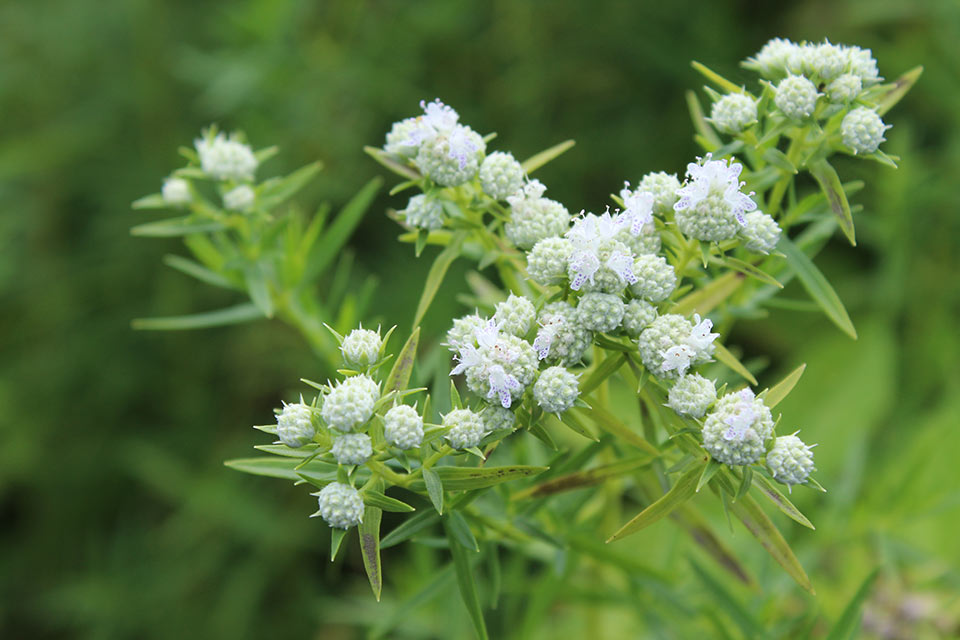
Slender Mountain Mint (Pycnanthemum tenuifolium)
The leaves of this plant are very narrow, almost needle like. It is in the mint family and dried leaves are often used as flavoring or in teas. The densely packed white flowers are tubular and often have scattered purple dots.

Bee Balm (Monarda fistulosa)
Another popular common name for this plant is Wild Bergamot. This is another member of the mint family, and the flower has a very lovely lavender hue. As with other mints, it is popular as a tea. This particular species has long been used for a variety of medicinal purposes: colds, stomach aches, headaches, and as an acne treatment to name a few.
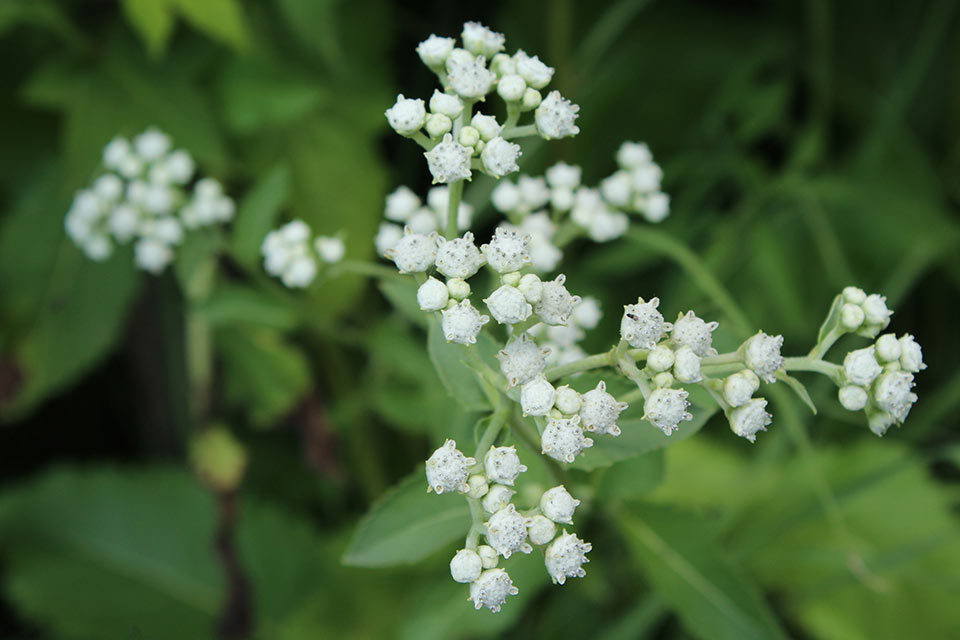
Wild Quinine (Parthenium integrifolium)
You will notice flat topped flower clusters that consist of uniquely shaped small, white flowerheads. The presence of this plant is a great indication of high-quality habitat. This plant does contain quinine, and during World War 1, the plant was harvested and used in the treatment of malaria.
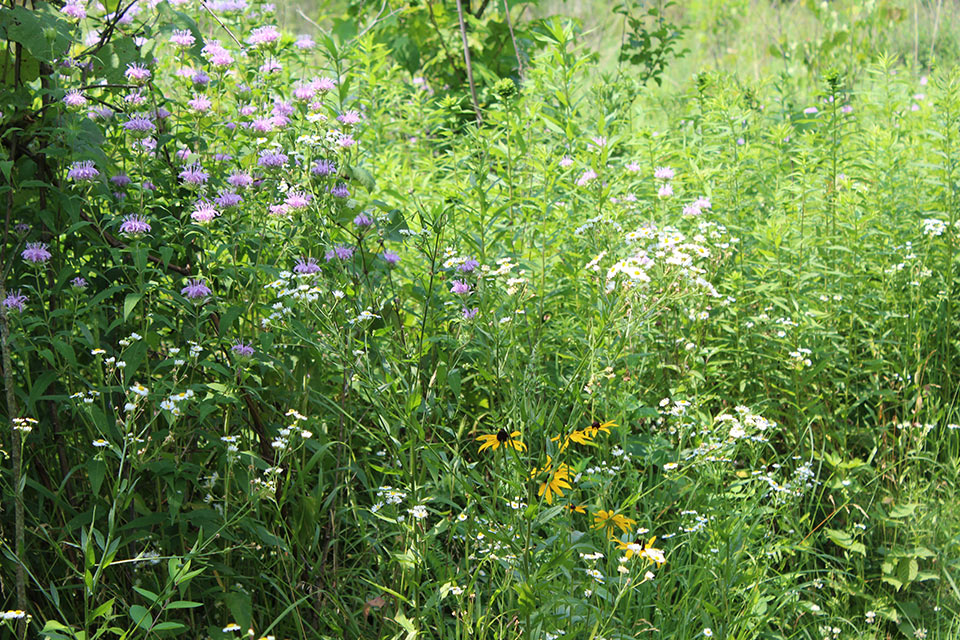
While I mentioned many uses for the plants above, keep in mind that as a state designated nature preserve – collecting at Ritchey Woods Nature Preserve is not permitted. You’ll just have to grow your own! Should you desire to incorporate any of these beautiful natives in your landscape, the Genus and species was provided for each.
What is a native species? A plant or animal that has evolved in a given place over a period of time sufficient to develop complex and essential relationships with the physical environment and other organisms in a given ecological community (Darke & Tallamy, 2014). Plants native to our area are the best choice for the landscape. They provide the greatest wildlife and ecological benefit. They are also adapted to our specific climate and require the least amount of maintenance.
What is Genus and species? These are often in Latin and are sometimes also referred to as the “Botanical Name” or the “Scientific Name”. Since common names vary so much from one place (or person) to the next, you just can’t guarantee what you are buying without knowing its scientific name.
Danesa Stolz is the former Chief Naturalist at Fishers Parks and holds a Bachelor of Science from Ball State University in Natural Resources and Environmental Management, and a minor in both Biology and Criminal Justice & Criminology. Many of her passions are intertwined with the natural world in which we live. Her 25 year career as an interpretive naturalist allows her to share her passion for nature with others. “I have been very blessed to spend most of my time while with Fishers at Ritchey Woods Nature Preserve, which holds a very near and dear place in my heart”.

